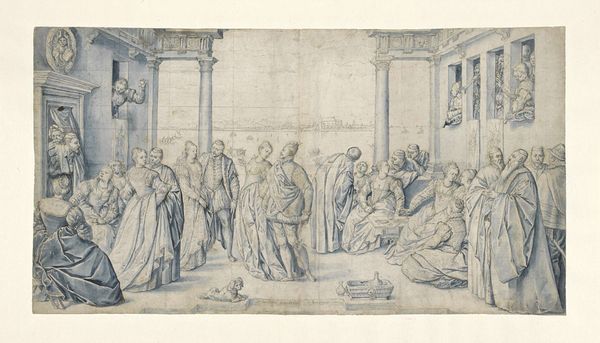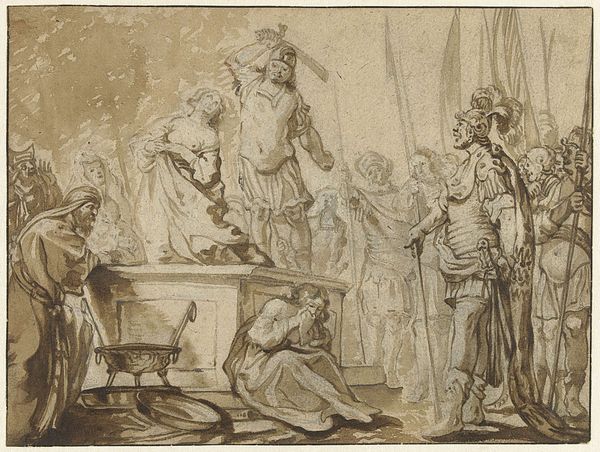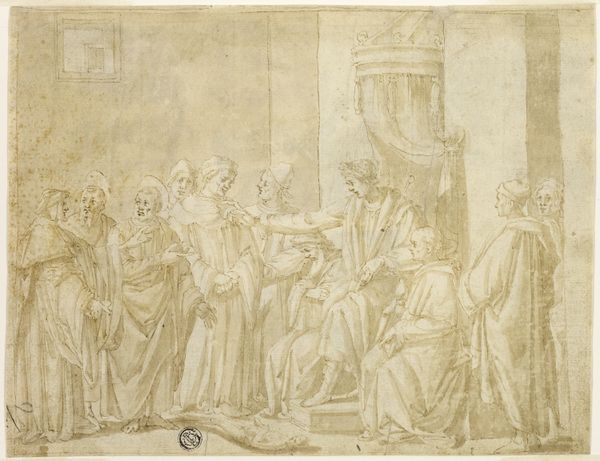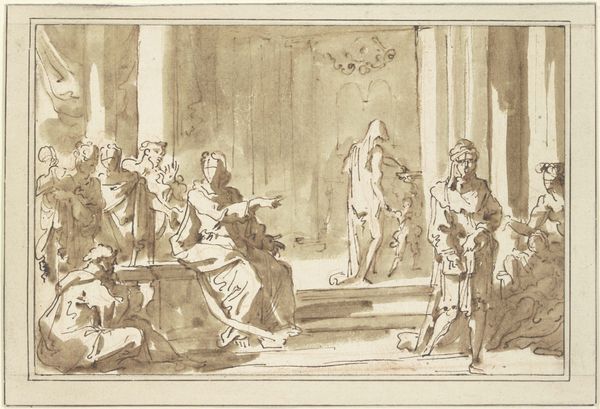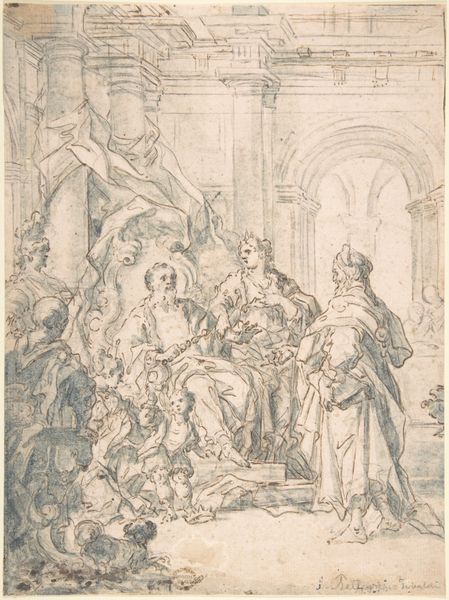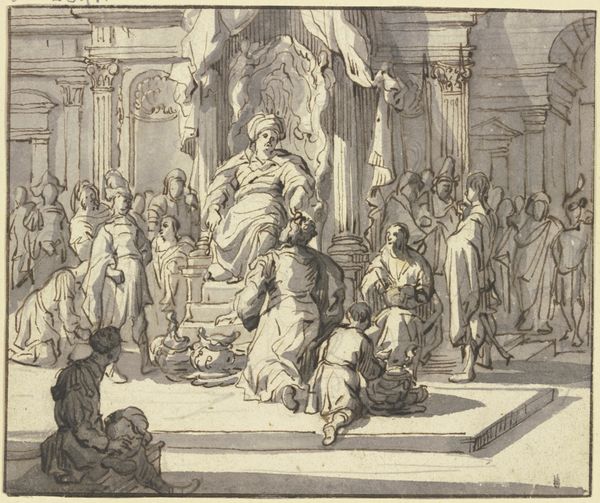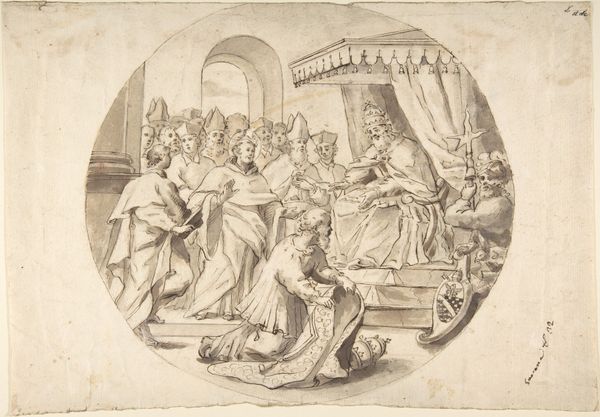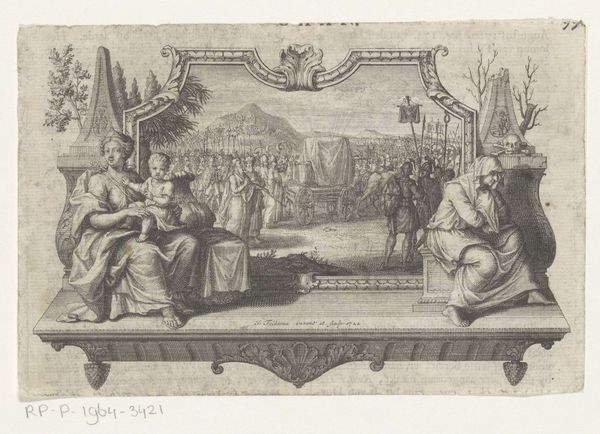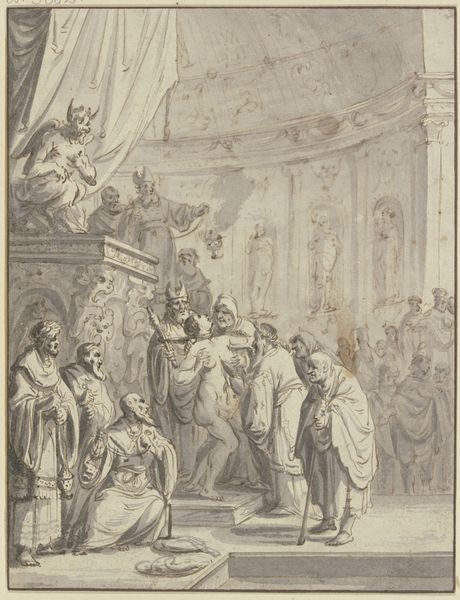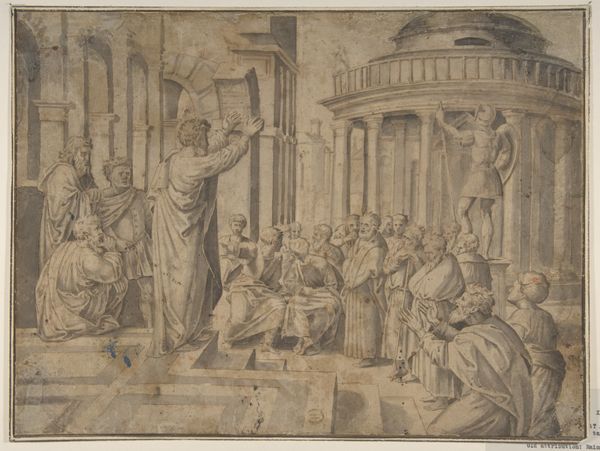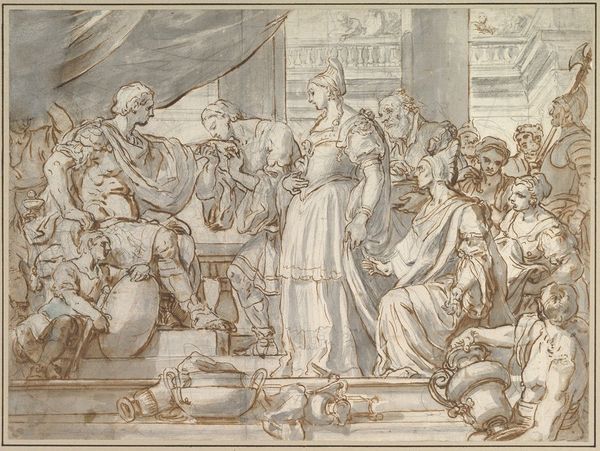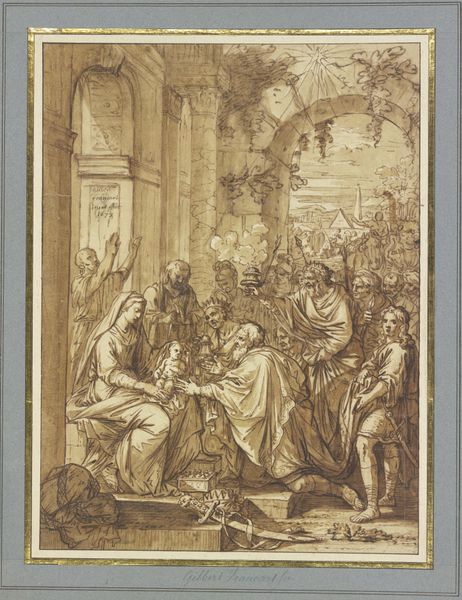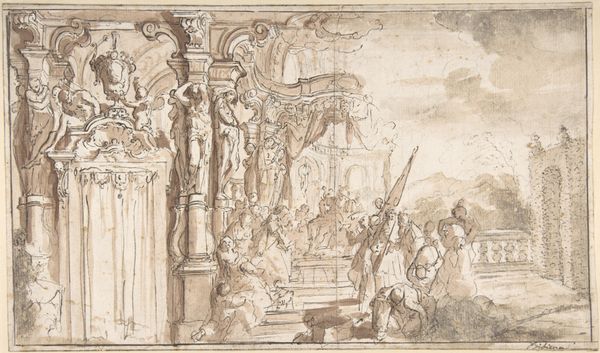
drawing, ink, pen
#
drawing
#
pen sketch
#
figuration
#
11_renaissance
#
ink
#
pen-ink sketch
#
pen
#
history-painting
Dimensions: height 130 mm, width 190 mm
Copyright: Rijks Museum: Open Domain
Curator: Here we have “Vrouwelijke heilige verschijnt voor een koning,” or “Female Saint Appearing Before a King,” a drawing executed in pen and ink attributed to Pieter de Jode I, placing its creation somewhere between 1580 and 1634. Editor: The delicacy of the line work is remarkable. Despite the monumental subject matter—a saint’s appearance before royalty—there’s a lightness to it, almost as if the scene is emerging from a dream. Curator: I find the saint's gesture particularly compelling; she holds a staff, possibly a cross, her other arm raised. That's a clear visual marker of divine authority, of a symbolic order being asserted. Notice the expressions on the faces of the king and his court. There's disbelief, but also awe, especially amongst the children. Editor: The composition certainly plays into that, doesn’t it? The Saint on the left, almost floating forward. Then your eye is drawn across the central court, to the figure of the king elevated above the rest on a small platform. It strikes me as a staging of power – temporal and spiritual – executed with simple lines and materials. Curator: I agree, but it’s the interplay that truly fascinates me – a visual representation of a struggle between earthly and divine authority, of course, but also hinting at internal psychological conflicts. The cultural weight of religious and political authority is carried so powerfully. Editor: Absolutely. And seeing the drawing medium, we have the social and economic context of artistic production—a tangible reminder of the artisan's hand, translating religious narrative for contemporary audiences through accessible materials. Curator: That act of translation is, in essence, how such narratives sustain themselves over time, reshaping to the world that it now inhabits, so we can see how they’ve affected our shared culture. Editor: This piece serves as an important lens to understand our history. Thinking about the ways stories were constructed and circulated is still so relevant today, if we ask who they benefitted then – and who still benefits now.
Comments
No comments
Be the first to comment and join the conversation on the ultimate creative platform.
